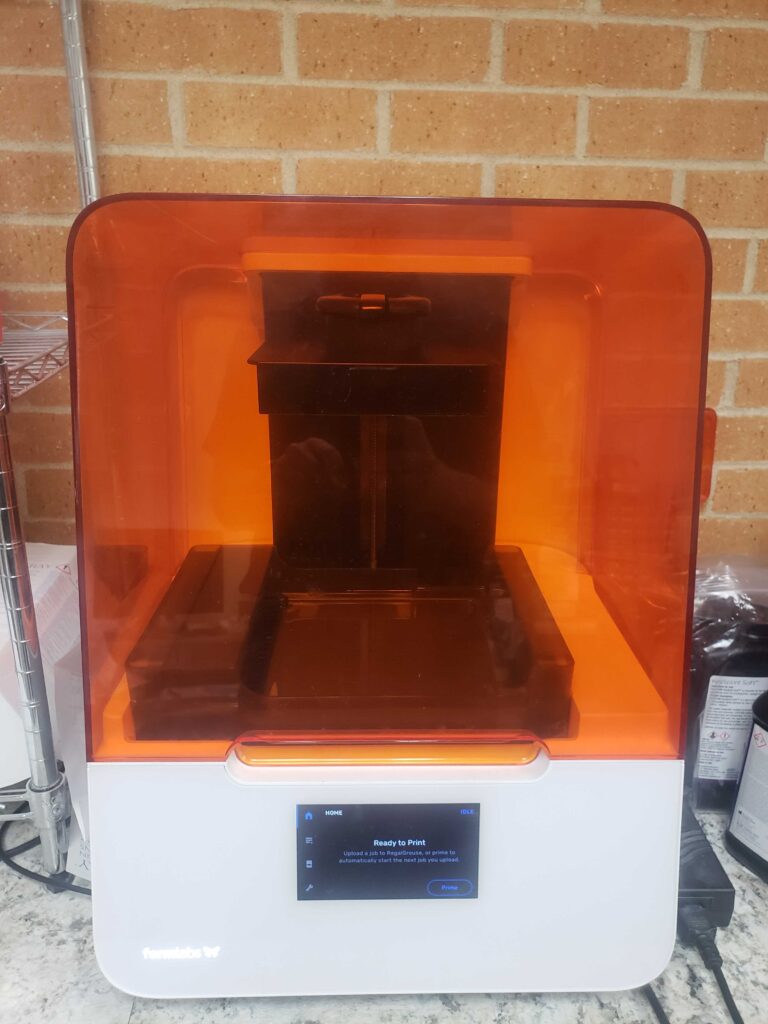With each passing day, the dental industry grows more complex and innovative.
As technology blossoms and expands, dentists everywhere are creating complete treatment packages, faster, simpler, and more efficiently.
Take, for instance, the growing popularity of intraoral scanners. Once thought to be an expensive luxury, they’re now indispensable tools for practices everywhere.
With the right equipment at your disposal, you’re able to provide the highest level of care for your patients.
Now, one of the latest additions to the field is creating a new group of fans everywhere: 3D printing in dentistry.
Though once a curious novelty, these rapidly-evolving machines are proving why they’re the solution of the future.
How far have they come?
Well, 63% of those surveyed in LMT’s 2021 3D Printing Survey say they use 3D printing in their operations – either in-house or through outsourcing. And, it’s a number on the rise.
Let’s take a look at what these amazing printers have to offer, and why you don’t want to miss out on their benefits.
How Does 3D Printing Work?
While you probably think of 3D printers as a recent development, the first patent describing the process was actually granted over 50 years ago, in 1971.
From there, advancements during the 80’s & 90’s brought the devices closer to practical industrial use. But, it wasn’t until approx. 2010 before a series of patent expirations and technological advancements led to the incredible tools they are today.
So, how do they work?
Well, think of a regular inkjet printer you probably had (or still have) in your home or office. It receives a set of instructions from your computer, and then squirts ink onto paper, as a moving ‘arm’ slides back and forth.
3D printers essentially work in a similar fashion, but instead of ink, they use resins, plastics, metal powders, or any number of other materials. They receive a set of instructions and move around in the designated pattern, spraying the materials as they go.
Layer by layer, they gradually build up a 3-dimensional model, precisely crafted to your specifications.
With nearly unlimited potential for both commercial and industrial application, 3D printers are especially changing the landscape for dental & medical industry alike.
3D Printing in Dentistry Increases Accuracy
No two mouths are alike. And so, neither are any two dental appliances.
Traditionally, molds, casts, and millings were required to create dentures, aligners, mouthguards, and other oral appliances.
But, no matter how skilled the creator, there’s plenty of room for error.
When even the smallest imperfections mean the difference between success and the need for a remake, getting the job done right – the first time – is crucial for you and your patients.
3D printers in dentistry eliminate any chance of human error, substituting hand milling, trimming, and polishing for the absolute precision of the digital workflow.
So, just how accurate are they? Well, some achieve a fitting of ± 0.1mm over 96% of surface points.
When combined with the data from an intraoral scanner, human error in creating dentures, implants, and other appliances is nearly eliminated, leading to impressive precision.
3D Printing Speeds Up Production
Let’s face it: you don’t want to wait around to get the devices & implants you need. Neither do your patients.
And here, 3D printers outperform traditional methods once again.
Traditional methods of creation meant messy, unpleasant dental molds and lengthy wait times, while devices were molded, milled, and trimmed by hand.
But, with digital workflows and 3D printers, the process becomes streamlined, speeding up production. Information can be sent right your lab and uploaded to a printer easily and efficiently.
3D printers in dentistry allow you to cut back, or even eliminate, the need for artisanal device production.
And, the difference in time savings can be incredible. One lab, for example, found 3D printing required 47% less time hand-processing than analog methods, leading to a 49% reduction in labor cost per denture.
Faster production & less time spent on labor means quicker turnarounds & treatments for you and your patients.
Printing Materials Have Improved
Sure, it’s true that in the early generations of 3D printers, material options were limited.
This led to poor esthetics and, well, less-than-desired strength for implants and appliances.
But today, that’s all changed.
Modern 3D printers in dentistry use some of the highest-quality materials available, including resins, powders, and even titanium-alloy metals, which rival nearly any method they’re compared with.
Advancing rapidly within the last few years, materials are now available that even meet the demands and intense requirements for crowns, inlays, onlays, and veneers.
And, with advancements in biocompatibility, these breakthrough options provide innumerable opportunities for 3D printing in dentistry.
Now, 3D printing can produce nearly any high quality appliance or device you’re looking for.
The Takeaways
3D printing technology has certainly come a long way in the last decade. Even within the last few years, progress was tremendous.
Now rivalling nearly any other form of production in terms of quality, they also increase turnaround time for your implant & appliance needs, while increasing efficiency throughout the entire process.
Though at one time 3D printers seemed like expensive novelty with limited use, that’s no longer the reality of today.
And, although they’re still quite a hefty investment for individual dental practices, that doesn’t mean you can’t outsource your work to a lab with the right equipment.
You’ll still receive the benefits of accuracy, speed, and simplified workflow, but without the intense up-front cost.
At First Choice, we’ll help you create the high-end, quality appliances you need, when you need them. Whether using our state-of-the-art 3D printers, or utilizing the skilled hands of our lab techs with traditional methods, we’re here to help make you smile.
So, how can we make you smile today?

